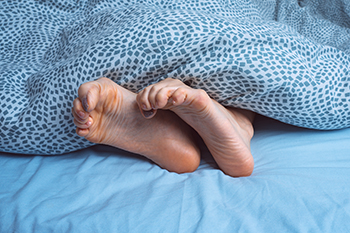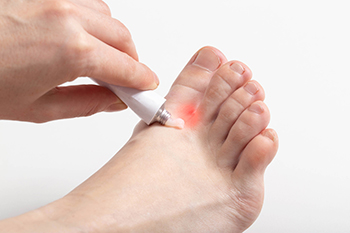
Diabetes is a chronic condition characterized by high blood sugar levels due to the body's inability to produce or properly use insulin. This condition can lead to various complications, particularly affecting foot health. High blood sugar levels can cause nerve damage, known as neuropathy, resulting in reduced foot sensation. This makes it difficult to notice injuries, which can worsen without proper care. Diabetes also impairs circulation, slowing the healing process and increasing the risk of infections. Additionally, poor circulation can lead to skin changes and ulcers, which, if left untreated, can result in severe complications, possibly including the need for amputation. Regular foot care, wearing proper footwear, and vigilant monitoring are vital for individuals with diabetes to prevent and manage these foot problems. If you have diabetes, it is strongly suggested that you are under the care of a chiropodist who can help you manage this condition.
Diabetes can cause serious problems in the lower limbs if proper preventive measures are not taken and diabetic wound care is not performed. If you would like to learn more about caring for diabetic feet, please consult with one of the specialists from Thornhill Foot Clinic. Our chiropodists can help you maintain the health of your lower limbs and your mobility.
Diabetes can lead to a host of foot and ankle complications, including:
Poor circulation
Peripheral neuropathy
Diabetic foot wounds and ulcers
Infection
Corns and calluses
Dry, cracked skin
Nail disorders
Hammertoes
Bunions
Charcot foot
If you have diabetes, you must be vigilant of any changes in your foot health. This is best done through daily foot inspections. Using a mirror to help you if necessary, look for any:
Cuts, scrapes, sores, or wounds
Bruising or discoloration
Swelling
Rash
Foul odor
Nail changes
Hair loss
Warmth and inflammation
Deformities
Lower limb pain
Strange sensations (numbness, tingling, burning, pins, and needles)
If you detect anything unusual, seek the care of a chiropodist as soon as possible. If you have any questions, please feel free to contact our office located in . We offer the newest diagnostic and treatment technologies for all your foot care needs.



